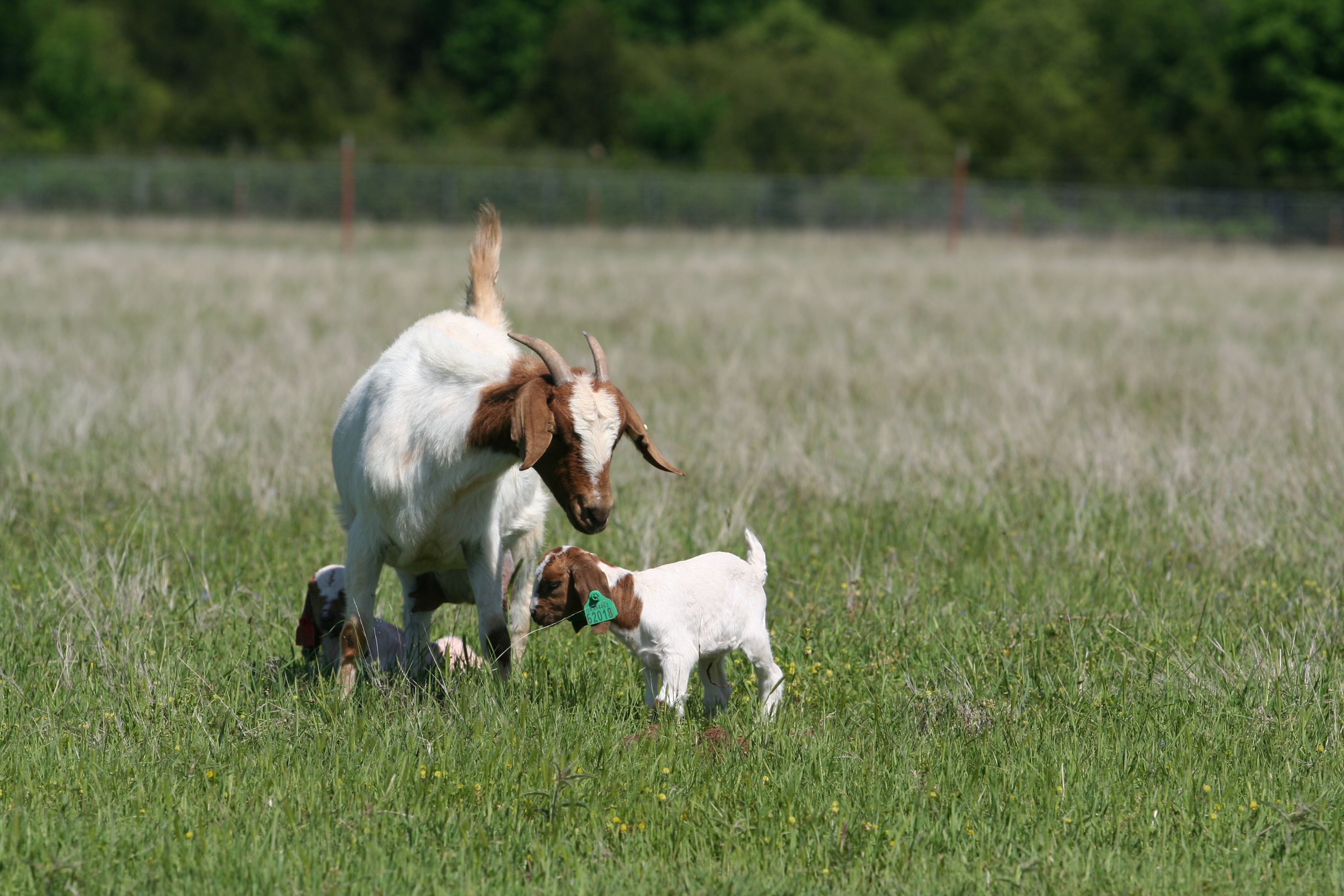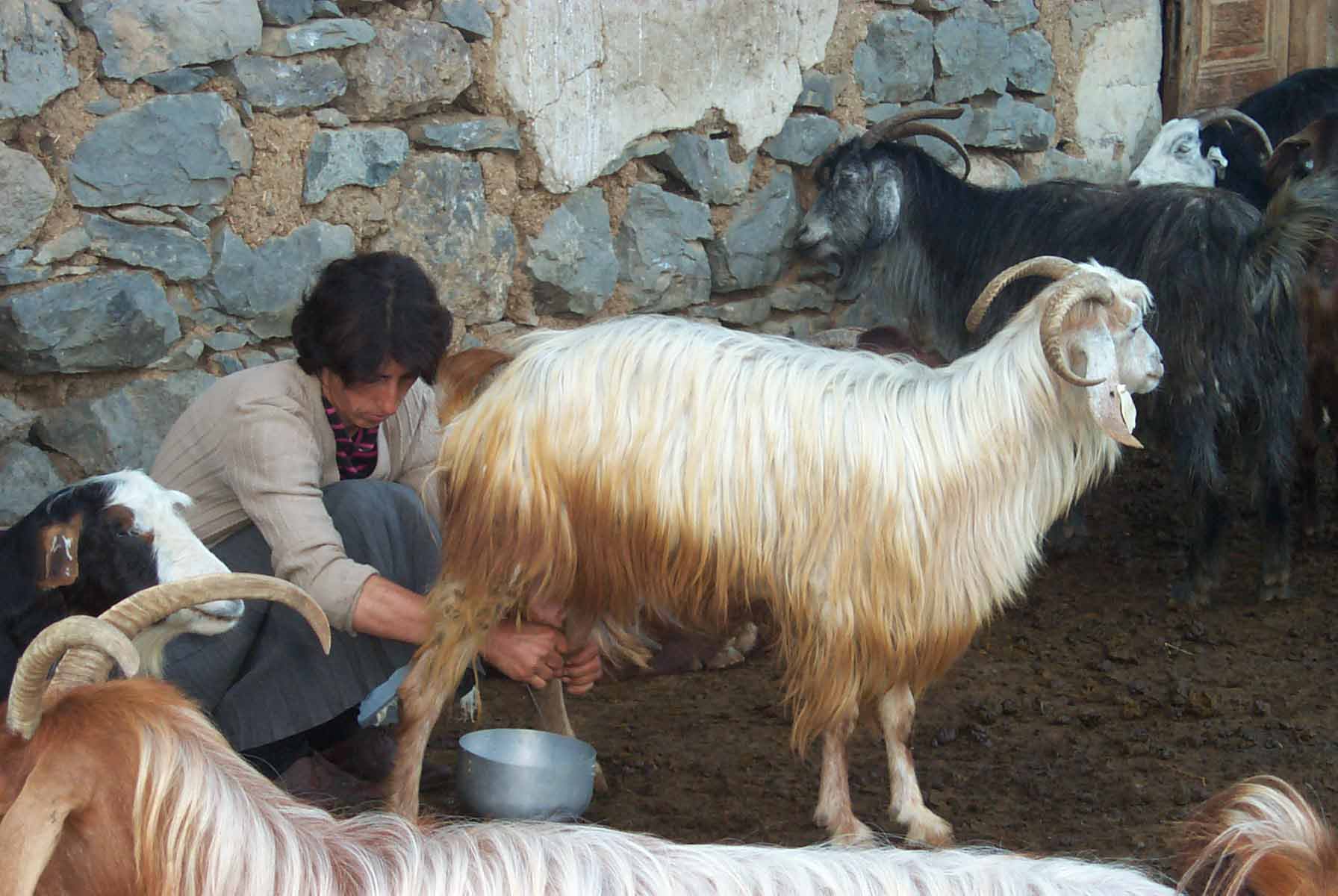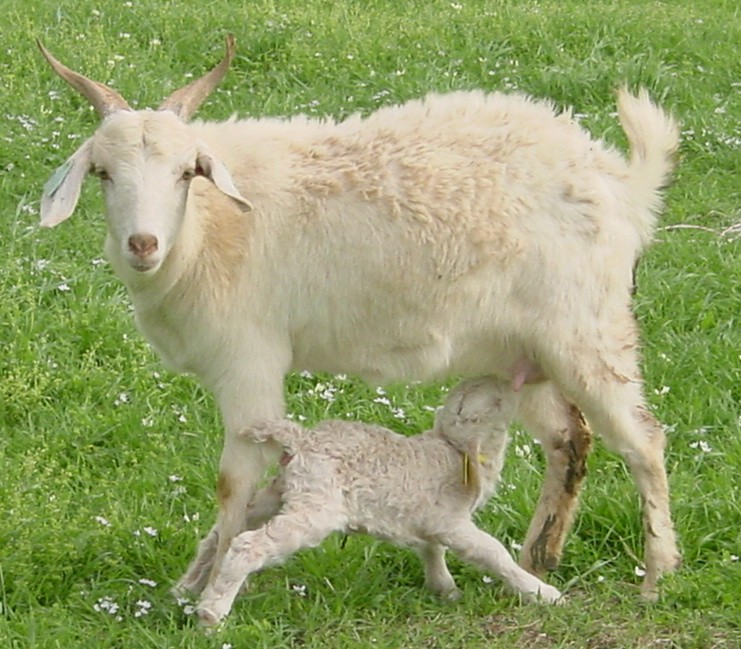This calculation is based on one of two methods
used to determine energy requirements for lactation as described
by Nsahlai et al. (2003). Maimtenance ME requirements are
those used for mature goats: 423 kJ/kg body weight0.75 for
meat and indigenous goats and 501 kJ/kg body weight0.75 for
dairy goats. The ME requirement for lactation is 5224 kJ/kg
of 4% fat-corrected milk, equivalent to an efficiency of ME
utilization for lactation of 0.589. The calculator is also
fitted to determine requirements with mobilization of tissue
energy for lactation and accretion of tissue energy, with
assumptions of 23.9 MJ/kg of tissue, effeciency of dietary
ME use for tissue gain of 0.84, and an efficiency of use of
mobilized tissue energy for lactation of 0.75 (AFRC, 1998).
The maintenance requirement includes an activity energy cost
typical of confinement rearing systems for mature goats. However,
by use of the Grazing Factor Calculator, the maintenance ME
requirement can be adjusted for a predicted grazing activity
energy cost. A default of 1 is included for housing in a pen
or stall setting.
The ME requirement for lactation is influenced by the energy concentration in milk. The fat concentration in milk can be used to predict its concentration of ME with this formula: MJ/kg = 1.4694 + (0.4025 × milk fat %) (e.g., 3.0% fat = 2.677 MJ/kg; 3.5% fat = 2.878 MJ/kg; 4.5% fat = 3.281 MJ/kg; 5.0% fat = 3.482 MJ/kg).
In this example, it was assumed that body weight (BW) change or average daily gain (ADG) was 0 g/day. In other words, neither 1) use of dietary ME for tissue accretion nor 2) use of mobilized tissue energy for milk production have been considered yet. In other words, a doe gaining weight will require more ME than based simply on milk production and fat concentration. Likewise, a doe losing BW will require less dietary ME for a given quantity and composition of milk than predicted above.
For an increase in BW (1), positive ADG (g) can be multipled by 0.0239 MJ/g and then divided by an efficiency of 0.75 to estimate dietary ME used for tissue accretion (e.g., 20 g ADG × 0.0239 MJ/kg / 0.75 = 0.637 MJ/day of dietary ME required for this 20 g ADG). Assuming a dietary ME concentration of 10.0 MJ/kg DM (i.e., 2.4 Mcal/kg), 58 more grams of dietary DM would be required.
For a decrease in BW (2), first the amount of energy from mobilized tissue is calculated as negative ADG (g) × 0.0239 MJ/g of tissue (e.g., 20 g × 0.0239 MJ/g = 0.478 MJ). Next, milk energy from mobilized tissue is estimated as mobilized tissue energy (0.478 MJ) × efficiency of tissue energy use for lactation (i.e., 0.84), with the product of 0.402 MJ. Total milk energy (4 kg milk × 2.878 MJ/kg of 3.5% fat milk = 11.512 MJ) is then corrected for the tissue contribution (11.512 MJ - 0.402 MJ = 11.11 MJ) to determine dietary ME used for lactation. Dietary ME necessary to provide this amount of milk energy is then estimated as before (11.11 MJ / 0.589 = 18.86 MJ). Even though consumed dietary ME was adequate to meet the maintenance energy requirement, there was partitioning of nutrients to the mammary gland.
Therefore, actual dietary ME used for maintenance is estimated by subtracting the amount of ME necessary to maintain the mobilized energy from the maintenance ME requirement. Efficiency of ME use for maintenance can be calculated with this formula (0.503 + (0.019 × ME concentration in dietary DM, MJ/kg)). Thus, 0.478 MJ of mobilized energy divided by the efficiency of 0.712 yields 0.671 MJ of ME, which when subtracted from the total maintenance ME requirement of 9.43 MJ gives 8.76 MJ of ME actually used for maintenance. Total ME intake is then again the sum of ME for maintenance and lactation (8.76 MJ + 18.86 MJ = 27.6 MJ).
Thus, estimates of DM intake for this doe are 2.63, 2.69, and 2.51 kg/day with 0, +20, and -20 g/day ADG, respectively.
Because efficiencies of ME use for maintenance and lactation are not greatly different, correction factors as applied for growing goats do not have marked impact on estimates of DM intake needed by lactating goats, and are thus not employed.
To determine if consumption of a calculated amount of a specific diet necessary to meet the ME requirement is possible, the Feed Intake Calculator can be used.


